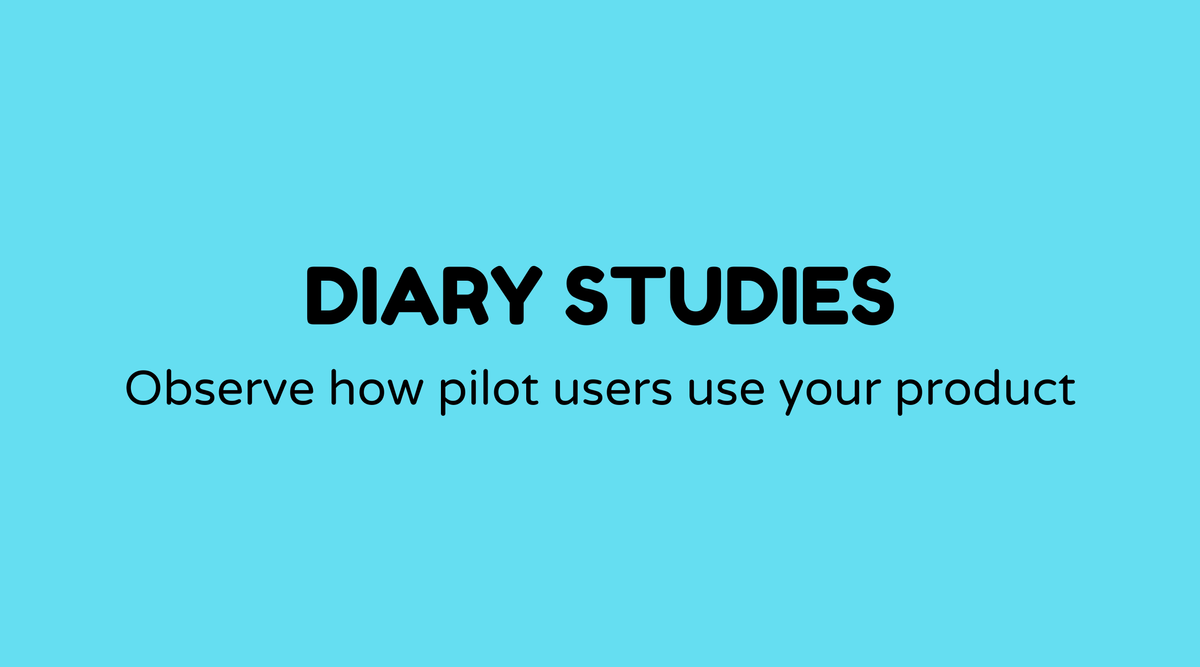Diary Studies

Overview of Diary Studies
Though it may not be the newest term in research methodologies, diary studies have quietly played a vital role in providing in-depth insights into user behaviors and experiences. Participants record their thoughts, actions, and feelings over time, allowing researchers to collect authentic data directly from their everyday lives. This longitudinal approach helps create a comprehensive understanding of how users engage with products in real-world contexts.
You may be wondering how a diary study is conducted, its fundamental aspects, and why it is essential. Let’s examine these components in a structured manner that emphasizes the importance of this methodology.
Why Diary Studies Matter
In an environment that consistently calls for innovation and user-focused products, grasping the minute-to-minute experiences of users can be transformative. Diary studies provide detailed information that is difficult to achieve with other research methods.
-
Authenticity: Unlike conventional surveys or interviews in controlled settings, diary studies capture real-time data directly from users' everyday experiences.
-
Longitudinal Insight: These studies enable researchers to observe changes and patterns over time, revealing insights that static research models might overlook.
-
User-Centric: Diary studies empower users to express frustrations, joys, and expectations, significantly aiding in refining product development.
Given their inherent value, diary studies hold an important position in user research methodologies, employed by organizations like Nielsen Norman Group (NNG) and IDEO.
What is a Diary Study?
At its core, a diary study involves participants documenting events and experiences in a diary over a specified time frame. These entries are then analyzed to understand behavior patterns.
Types of Diary Studies:
- Structured Diary: Participants respond to specific questions about their experiences.
- Unstructured Diary: Participants are free to share any information they think is relevant.
- Hybrid Diary: Combines elements of both structured and unstructured formats.
In the digital era, diary studies have progressed beyond traditional methods, with apps and online platforms facilitating smooth data collection. The empathy and connection derived from diary studies are particularly impactful, as seen by practitioners at Microsoft and Google.
How to Conduct a Diary Study
Executing a diary study demands careful planning and execution. Here’s a step-by-step guide for effective implementation:
-
Define Objectives: Clear objectives guide the study design and ensure the gathered data addresses pertinent questions.
-
Select Participants: Choose participants who represent your target users. Unlike larger surveys, diary studies usually involve fewer participants for deeper insights.
-
Design the Diary: Decide whether a structured, unstructured, or hybrid format suits your needs. Provide clear instructions to participants.
-
Pilot Testing: Conduct a test run to identify any issues with the diary process. Make adjustments based on feedback.
-
Data Collection: Gather entries over the designated period. Regular reminders and a feedback mechanism can help maintain engagement.
-
Analysis and Synthesis: Examine entries for recurring themes, patterns, and anomalies. Software tools like NVivo can aid in qualitative data examination.
-
Reporting: Present findings in a structured manner with actionable insights for stakeholders.
Examples of Diary Study Applications
-
User Experience (UX) Design: Companies like Airbnb utilize diary studies to understand how users interact with their application over time, pinpointing issues and opportunities for improvement.
-
Healthcare: Researchers conduct diary studies to track patient symptoms, medication adherence, and emotional health.
-
Education: Diary studies offer insights into study habits, student engagement, and interactions with educational technology.
-
Consumer Product Testing: From electronic devices to household goods, diary studies help companies like Procter & Gamble gauge customer satisfaction and identify issues.
FAQs
How long does a diary study usually last?
- Diary studies can last from a few days to several months. The duration depends on research objectives and the behaviors being observed.
How can diary studies improve product design?
- Insights gleaned from diary studies highlight real-world usage and challenges, enabling designers to create intuitive and user-friendly products.
What challenges might arise during a diary study?
- Challenges may include participant drop-out, inconsistent data entry, and the subjective nature of entries. Providing clear instructions and maintaining regular engagement can help alleviate these issues.
Can diary studies incorporate quantitative research?
- While primarily qualitative, diary studies can include quantitative elements, such as frequency counts of specific behaviors.



